A show-stopping meat and cheese platter (charcuterie board) may be the easiest possible contribution to a holiday party. Here's how to make one in about 15 minutes.
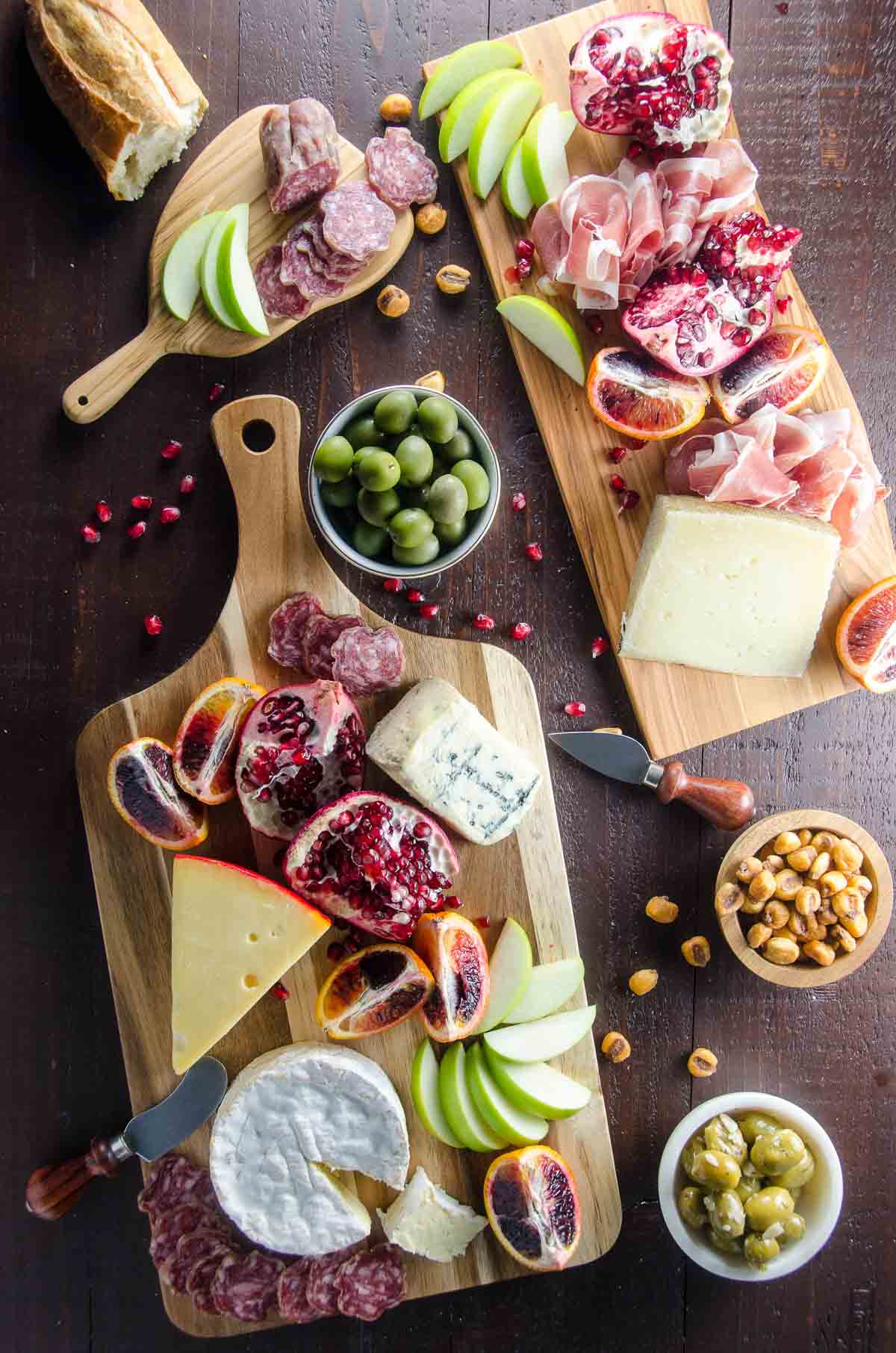
Why we love this recipe
The beauty of a good meat and cheese platter doesn't begin or end with its namesake ingredients. It begins with the perfect ease of picking up a few beautiful supplies and assembling them in 15 minutes or less. And it ends only with your creativity.
The great thing about a charcuterie board is that it's basically the bedhead of appetizers. It thrives when it's not too structured. Make it beautiful, but make it seem like it just woke up, rolled out of the fridge looking like this and arrived at the table ready to breeze its way through the best day ever.
Of course, like any kind of effortless chic, there's some thoughtfulness and structure underlying a good meat and cheese platter. In this post I'll talk you through the essential elements. You'll take it from there, either following the suggestions as-is or riffing on them to your heart's desire.
What you'll need
Here's a glance at the equipment and ingredient categories you'll need to make this recipe. Throughout the post, I'll give you plenty of specific suggestions in case you'd like to follow a formula. But a charcuterie board is very flexible, so you can pick and choose — or incorporate additional elements — as you like.
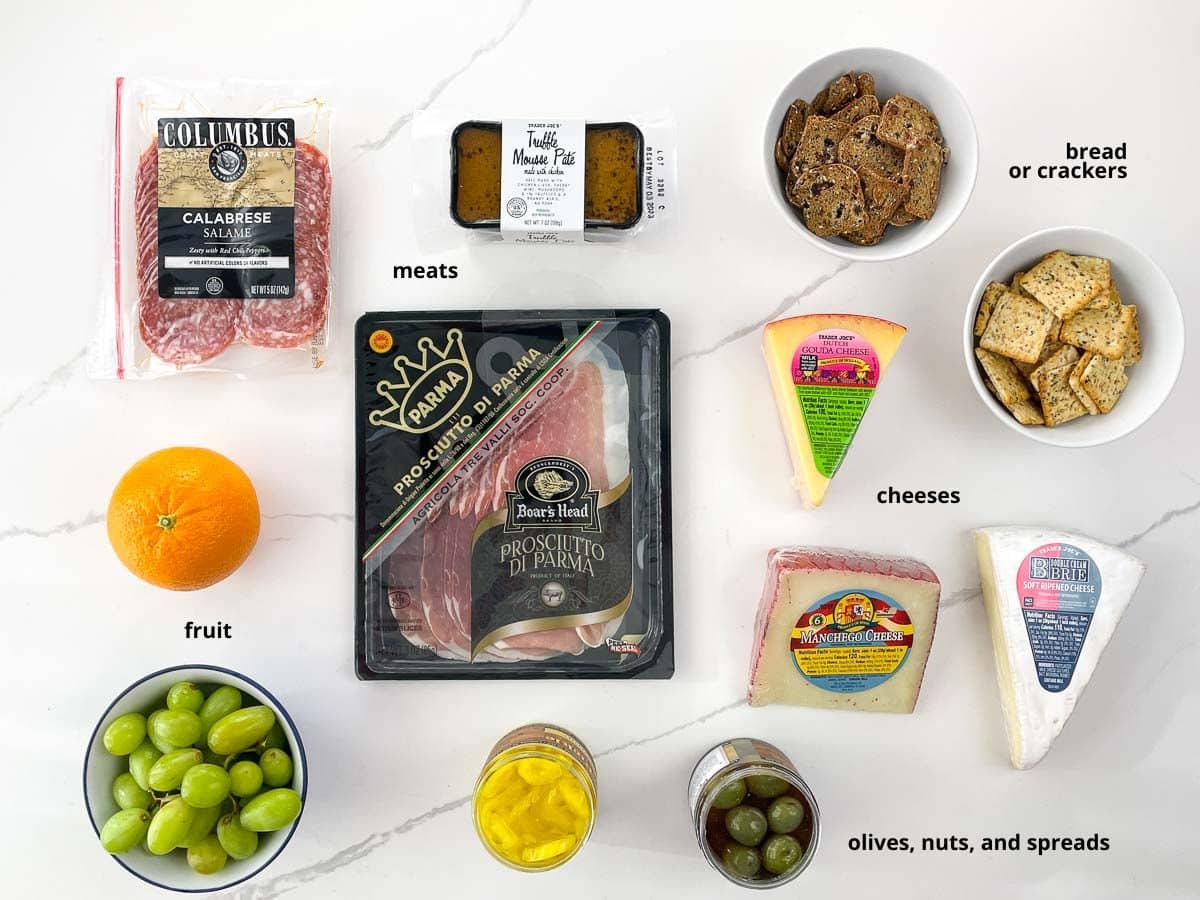
The gear
- You'll start with a variety of pretty, slightly mismatched boards and small bowls. Wood, slate, and marble are good choices for boards, and bowls can be of any variety you like.
- Choose sizes that allow ingredients to overflow a bit — this is the quickest and easiest way to communicate a feeling of generosity and abundance.
- It's hard to link to sources that don't sell out over the years, but here are a few of my favorites: walnut boards from Virginia Boys Kitchens, virtually anything from Farmhouse Pottery, and I'd be lying if I didn't include Target for everything from small marble bowls to acacia wood boards.
- A basic set of cheese knives will last throughout your hosting lifetime. You can use whatever you've got, but a simple set will give you lots of variety and functionality for a reasonable price. I've had a set very similar to this one for more than 20 years, and I absolutely love using them.
The ingredient categories
- You'll select a few cheeses of different milk types, firmness, and ripeness.
- A variety of really good cured meats with different flavors and textures is always a hit.
- Special little savory bites like olives, nuts, and corn nuts, keep people coming back to snack.
- A variety of interesting crackers and breads gives your guests options.
- Sweet elements like fresh fruit, honey, and/or preserves round out the flavor profile and complement the savory ingredients.
The best cheese for a charcuterie board
For a group of 10-ish people and to provide some nice variety, start with four cheeses of 8 to 12 ounces each. The most important thing is to select cheeses you like to eat.
Beyond that, aim for variety in:
- Type of milk (cow, sheep, goat, even nut)
- Strength of flavor
- Softness or firmness of texture
- Style of cheese
You can select cheeses from one region or aim for variety here too.
For the charcuterie board pictured, I used:
- A small wheel of Camembert (mild flavor, soft cow's milk cheese from the Normandy region of France)
- Some 3-month aged Manchego (medium flavor, semi-hard sheep's milk cheese from the La Mancha region of Spain)
- A mild and creamy Danish blue cheese (medium flavor, semi-soft, cow's milk cheese)
- A good old red wax Gouda from Holland (semi-soft, cow's milk cheese), requested by the 8 year old, which turned out to be wonderfully nutty like more aged Goudas usually are, and was the star of the show
Obviously I did a fairly unimpressive job of achieving variety of milk type, but no one seemed to care. Point being: break the rules all you like, and there will still be cheese.
The best meats for a charcuterie board
I like to aim for a variety of flavors and textures in the actual charcuterie part the platter as well. There are tons of great options, and you'll likely discover your own favorites. Here are some of ours:
- I almost always include some thinly sliced Prosciutto di Parma or San Daniele, and it always disappears quickly. Jamon, coppa, or speck would make a good alternative. The amount you choose may depend more on your price range than anything, but aim for about an ounce per person.
- It's nice to include one small whole dried salami, which you can cut on the bias into relatively thin but still substantial slices. Genoa, sopressata, Napoli, Toscano, Calabrian, pepperoni, and Spanish-style chorizo would all make great choices.
- I also like to include one variety of pre-sliced salami, which will typically be sliced thinner and have a larger diameter. Many of the same styles listed above will be available in this format, too. Choose a different one for variety's sake, and aim for about half a pound total.
- Pâté makes a welcome addition to a meat and cheese platter. Trader Joe's makes a reasonably priced truffle mouse version with chicken liver (pictured in the ingredients photo above). It's virtually identical to my other favorite, much more-expensive brand.
Other savory elements
While it's perfectly fine to add only sweet or only savory elements to a cheese board, I find it's easiest and most crowd-pleasing to do a little of both. For savory additions, I typically like to include olives, maybe an interesting pickle, some nuts, and something very crunchy, like corn nuts. Again, follow the principle that it's a good idea to serve what you like to eat.
- For olives, you can simply choose your favorite. We love Sicily's plump green Castelvetranos with the slightly sweet flesh, garlic-and-lemon marinated green olives, and Cerignolas.
- Pickles can mean anything from diminutive cornichons to giardiniera to a flavorful chutney.
- For nuts, I love Marcona almonds (especially when truffle flavored), good old honey roasted peanuts, or shelled pistachios with or without added seasonings.
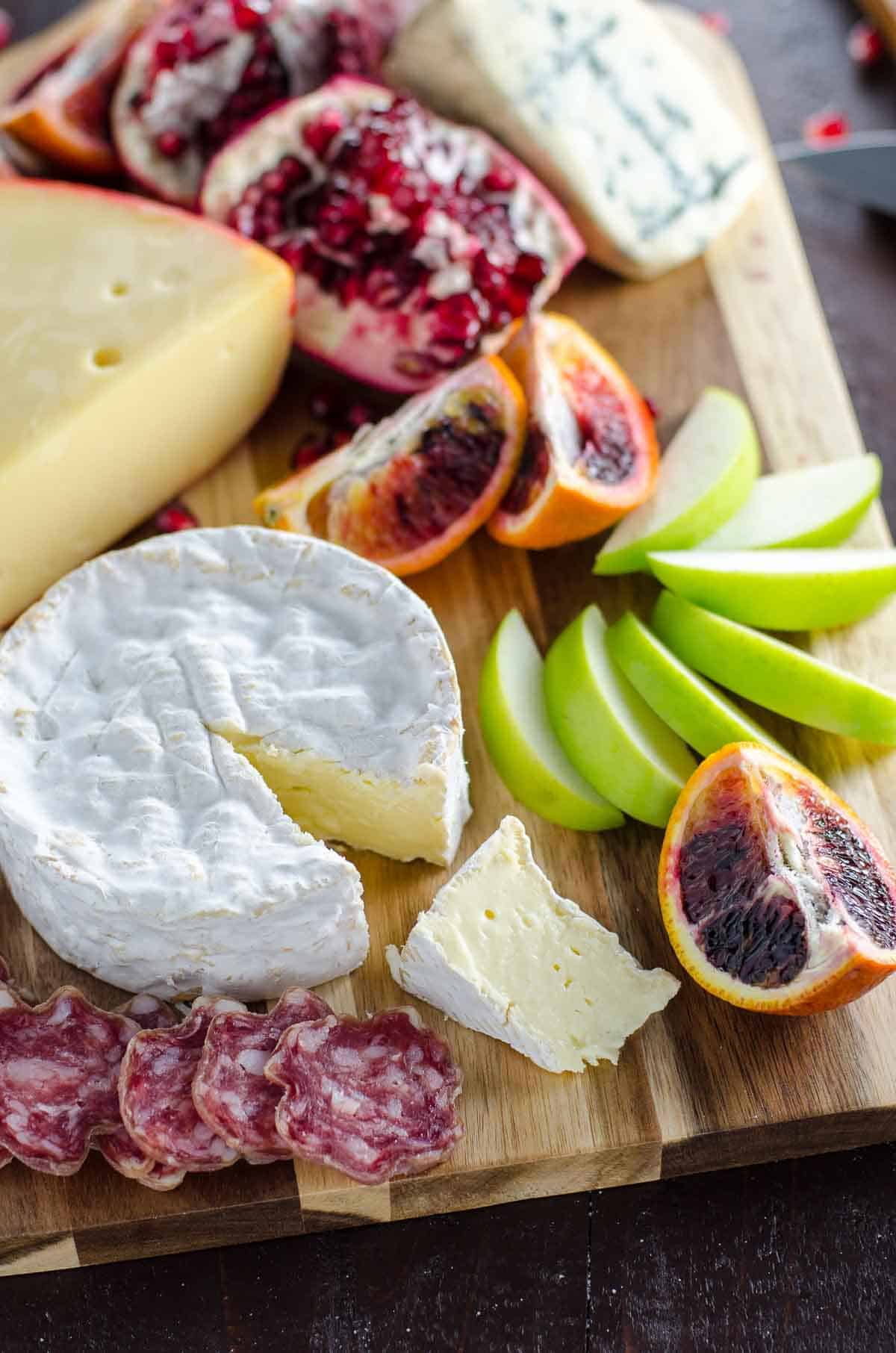
Sweet elements
Seasonal fruits, honey, and preserves layer in tons of color, flavor and interest.
Fruit
You can choose any of your favorite seasonal fruits. In the summer, berries and stone fruits make a nice selection. In the winter I like to include:
- A couple of blood oranges, cut into wedges
- Some tart green apple slices (which don't brown readily)
- A pomegranate that I've quartered medium-savagely and removed some of the arils from to toss faux-relaxedly onto the table
- Grapes are always a good choice — cut them into tiny bunches so guests can pick them up easily
The shapes and colors add a whole lot to the presentation with only about three minutes of work.
Preserves
Here are a few of my favorites for super-sweet elements, though you can feel free to swap in your own. You'll only need a few ounces total.
- Your favorite local honey
- Either fig jam or quince paste — both are absolute cheese board classics
- Honestly, a little bit of any jam that you really love
Bread and crackers
There are so many options for this element that it's hard to know where to begin. I usually opt for either plenty of sliced or torn baguette, or a variety of contrasting cracker types:
- Truth be told, Triscuits are a forever favorite around here
- Lesley Stowe raincoast crisps are dreamy
- Firehook crackers are another favorite
How to make it
Here's an overview of what you'll do to make a gorgeous meat and cheese platter. You can see the steps in action in the video that accompanies this post, and get all the details in the recipe card below.
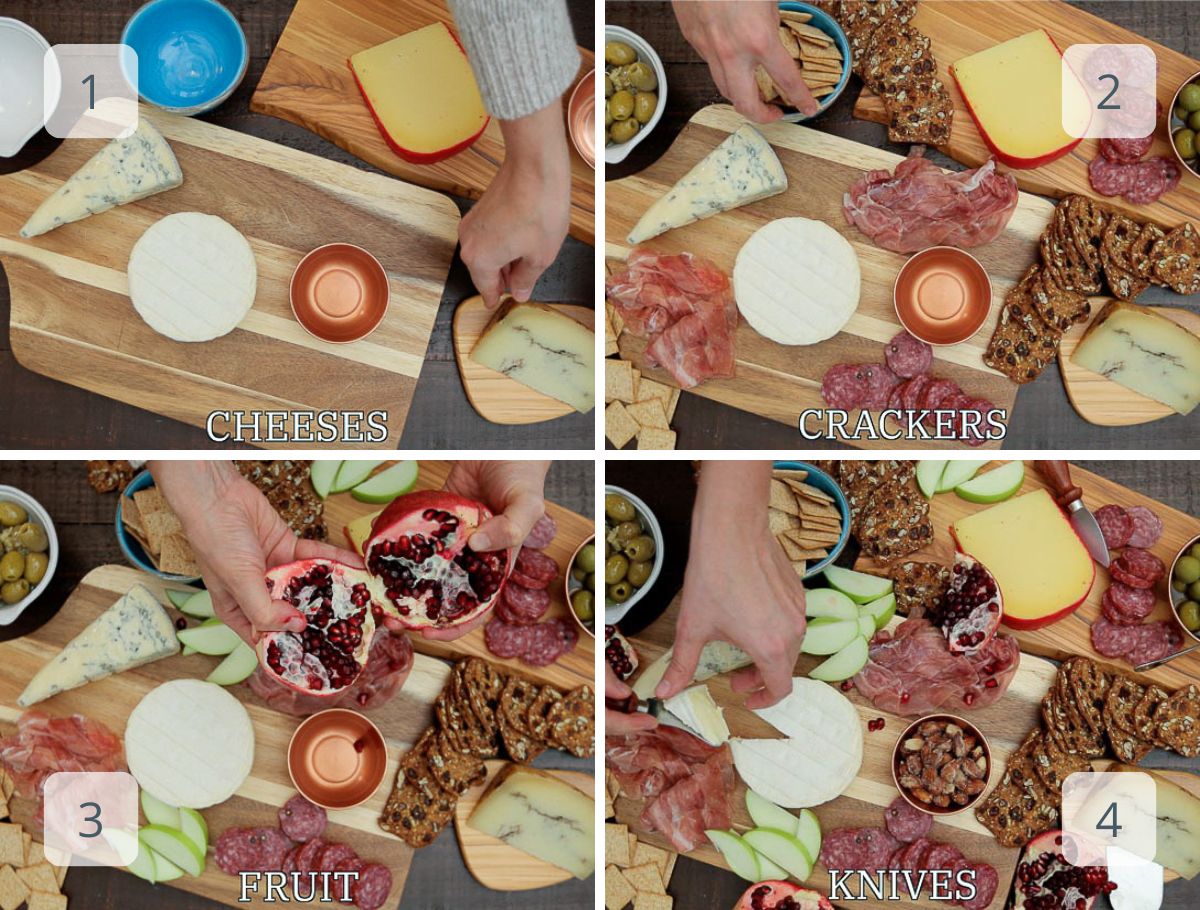
- First you'll arrange the cheeses, facing out (where applicable) to make them easier for guests to cut. Then arrange the meats. I like to create multiple areas on the board that feature the same ingredient.
- Next, arrange crackers, olives, nuts, and any other savory elements in bowls and on boards, beginning to fill in any large gaps.
- Cut any fruit into pieces and arrange on the board. Tuck in any small jars or bowls of honey or preserves. Assess the situation and continue arranging until you're happy with how everything looks.
- Arrange knives and small spoons as needed. I recommend cutting a slice or two from each piece of cheese to encourage guests to dig in. That's it!
Expert tips and FAQs
All of the elements for this meat and cheese platter are purchased rather than homemade, so it comes together very quickly. You can shop up to a week in advance. I recommend gathering your ingredients an hour or so before guests arrive and assembling the board shortly after that.
Store leftover elements in separate airtight containers in the fridge for up to a week.
More favorite platters
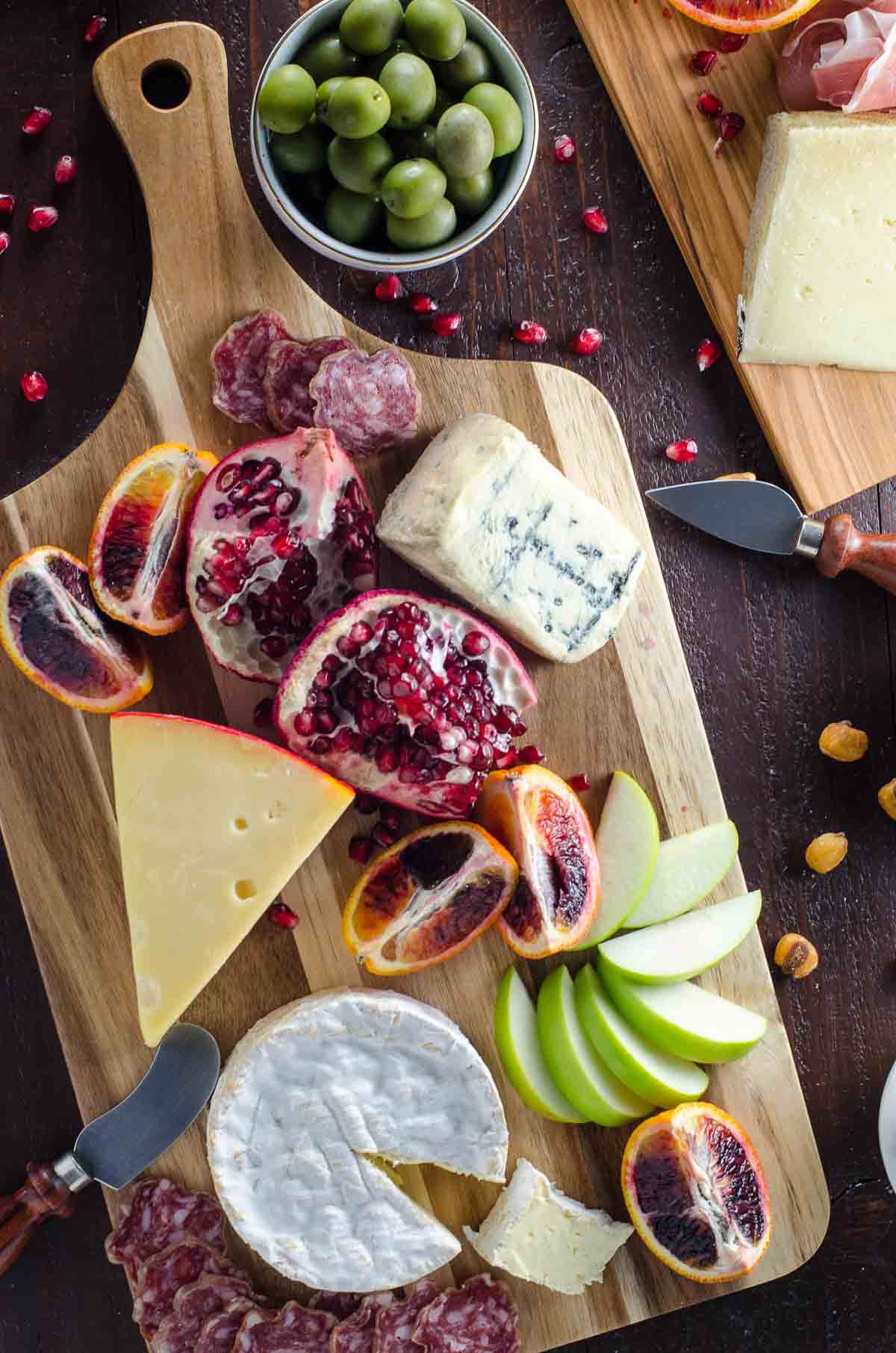
Hungry for more?
Subscribe to Umami Girl's email updates, and follow along on Instagram.
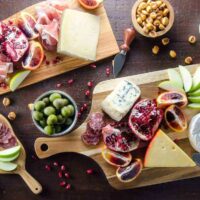
Meat and Cheese Platter (Charcuterie Board)
Ingredients
- 4 8- to 12- ounce wedges of cheese
- 1 whole pomegranate
- 2 Granny Smith apples
- 2 blood oranges
- 1 cup corn nuts
- 2 cups olives (I use two types)
- 6 ounces dry salami (Genoa or sweet sopressata)
- 6 ounces prosciutto
- 2 torn or sliced baguettes (or crackers)
Instructions
- On a countertop or table, arrange a few nice-looking boards and small bowls. Throughout the process, you'll want to choose vessels that are just barely big enough to contain the ingredients you're arranging, maybe with a bit of spillover. This method lets you easily create a vibe of generosity and abundance, which helps put guests into a happy state of ease.
- Arrange the cheeses, facing out (where applicable) to make them easier for guests to cut.
- Next, arrange the meats. I like to create multiple areas on the board that feature the same ingredient.
- Follow with crackers, olives, nuts, and any other savory elements in bowls and on boards, beginning to fill in any large gaps.
- Cut any fruit into pieces and arrange on the board. Tuck in any small jars or bowls of honey or preserves. Assess the situation and continue arranging until you're happy with how everything looks.
- Arrange knives and small spoons as needed. I recommend cutting a slice or two from each piece of cheese to encourage guests to dig in.
Video
Notes
Nutrition
Hungry for more?
Subscribe to Umami Girl's email updates, and follow along on Instagram.


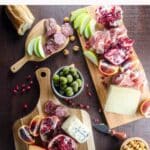
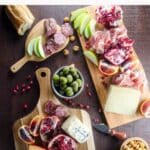
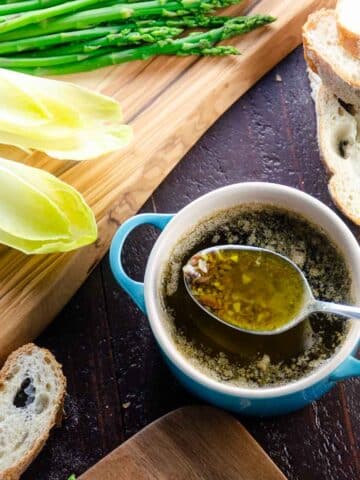
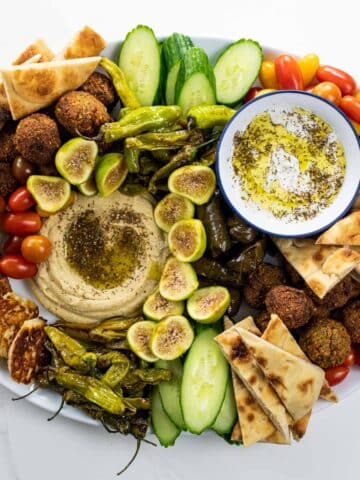
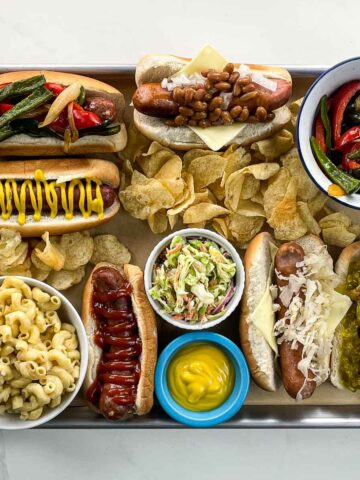
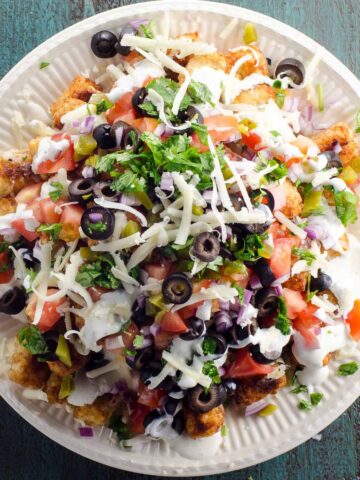

Leave a Reply